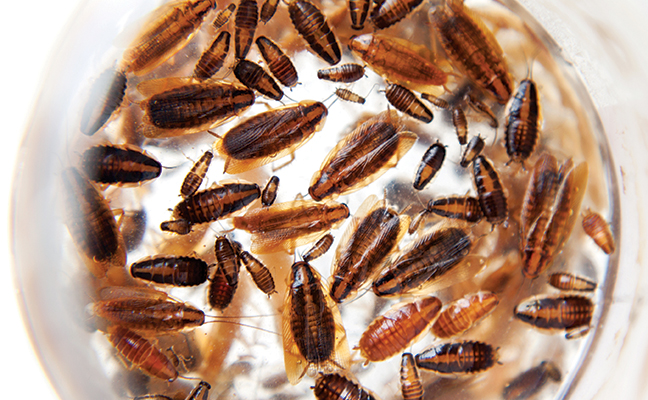Often, I am asked, “What is the best chemical to use to kill cockroaches?”
My answer goes something like this: “There is no one best product for every species of cockroach, for every type of account and for every specific situation. Most of the time, you may need more than one type of formulation and product in severe initial cleanouts. Sometimes, you may not be able to use any product.”
I then get a look that says, “I asked a simple question. I want a quick fix; skip the long explanation.”
If managing cockroaches were that easy, we would not be called professionals.
What we do is not brain surgery, but it does require some basic knowledge and techniques to accomplish pest elimination. Just killing some cockroaches and leaving others can be done with an over-the-counter product.
Even with the best product, a poorly trained technician can fail. I often say, “Give me an average product and a great technician, and I will take it over a great product and a poor technician.” For me, a good technician starts with a can-do attitude, compassion for the customer, love of the job and a refusal to give up. Another important element is thinking like a cockroach.
The following will help you fine-tune how to become a great technician.
1. Cockroaches are beasts of little brain.
When you are given little brain capacity compared to humans, you need other abilities to survive. Take reproduction, for example: Most cockroach species produce many offspring in a relatively short time so that enough survive to carry on.
The German cockroach (Blattella germanica) can complete its life cycle in about 45 days. Now that we do quarterly service, if you leave some alive, you are guaranteeing survival and thriving for the cockroach species.
The key here is after the initial treatment, do not wait a full month or longer to come back and determine what, if anything, needs to be done. On the second visit, install sticky traps to give yourself a better picture of just how well you did or what you missed.
2. Take away the basics.
Food, water and harborage are considered the basis of life for all animals. With German cockroaches, the carrying capacity (total number that can survive in a given area) is usually based on how much harborage is available. A 2-ft. by 2-ft. cardboard box that is 1 ft. high with fluted walls (and glue to eat) can harbor more than 6,000 cockroaches. Remove the box by throwing it out or encasing in a plastic bag, and you are on your way to squashing the cockroach population.
3. Think in 3D.
The normal range of a German cockroach may be up to 20 ft., but often it’s only a few feet. The harborage area could be below the kitchen or above it. Just because you find one or two pockets of cockroaches does not mean there are no more. Keep looking.
4. Stay up past their bedtime.
This species, as most animals, comes home to roost. We all have select comfort zones. Humans even select which side of the bed they sleep on. Similarly, cockroaches select where along a crack or crevice they hide. If the cockroaches are nocturnal, it means most hide in the same cracks and crevices all day. Keep looking until you find them.
5. Realize you’re doing a public service.
We know domestic cockroaches can and do trigger asthmatic attacks and physically abuse humans by chewing on eyebrows and sores. From field research I conducted more than 40 years ago, we were able to verify that more than 90 percent of German, American and Oriental cockroaches are capable of transmitting at least three different types of bacteria, including Proteus, Salmonella and Escherichia coli. Recently, certain strains of E. coli have become resistant to antibiotics. This continued fight to eliminate German cockroaches is more important than ever. Care! Do it right.
One of my favorite expressions is “You have to think like a cockroach to beat it.” Now you know that means more than just the term cockroach. Which species is it? Then, start thinking like that specific species.
Contact Dr. Austin Frishman, a PMP Hall of Famer, at PMPEditor@northcoastmedia.net.

Excellent research work especially ehich you mention regarding interval period is definetly going to help me alot. And i will start thinking like a roach now